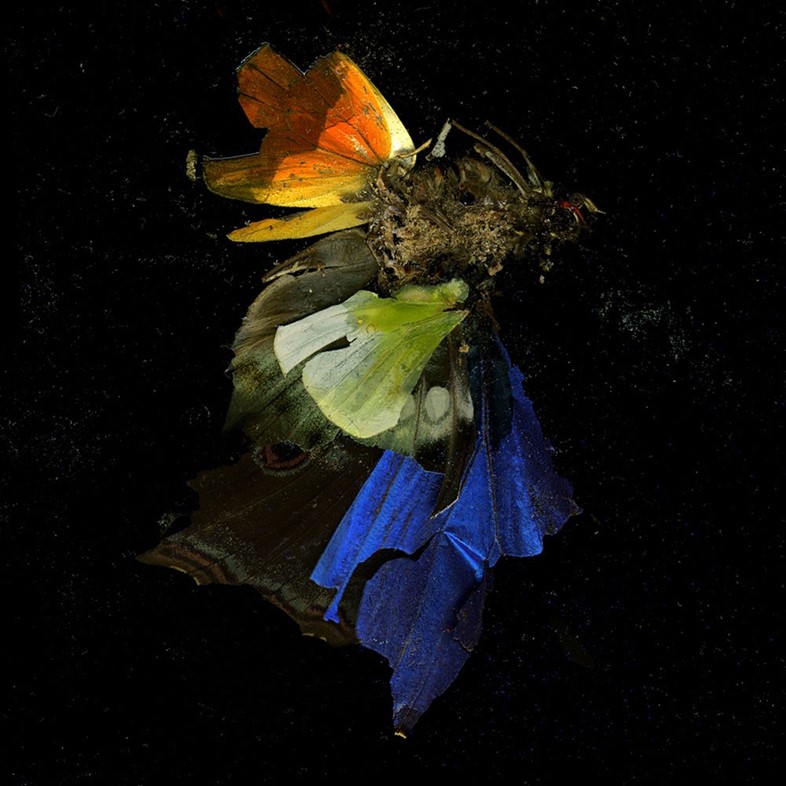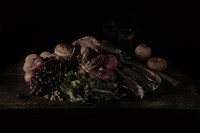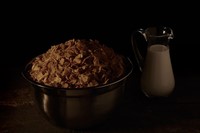The visionary Mat Collishaw shares the macabre tales behind the beautiful works from his two new exhibitions
In possibly the most infamous image that artist Mat Collishaw has created to date, an enlarged crop of thick brown hair is splayed in all directions by the scarlet wound glistening at its centre. It’s a visceral and discomfiting image at any size, but displayed over the height and breadth of 15 lightboxes, as he intended it to be, it’s arresting enough to stop anybody in their tracks.
Collishaw’s work has evolved a great deal since Bullet Hole, the striking 1988 piece which propelled the then Goldsmiths student to fame as part of the Damien Hirst-curated exhibition Freeze, but he continues to invoke that same sense of shock, albeit with more nuance now. He was one of the original YBAs – having once dated Tracey Emin and nutured an enduring friendship with Damien Hirst – and he continues to challenge his viewers' sense of shock to this day through a variety of mediums.
Take Last Meal on Death Row, for example; a series of eery photographs of the final meals eaten by inmates in Texas prisons shortly before they met their death. By recreating customers' final culinary requests – a platter of pale fleshy shimp, for example – beneath a heavy, all-absorbing darkness, Collishaw imbues them with the unflinching mystery of a Dutch still life, rich in unspoken secrets and ghostly tales. And who could fail to be captivated by the recreation of a mass murderer’s final meal?
His subject matter is unapologetically wide-ranging. “Pornography, the crucifixion, gleaming fairies, syphilitic child prostitutes, bestiality, bondage, addiction, religion, exaltation and despair,” BlainSouthern gallery lists in its provocative introduction to his work. “There is seemingly no taboo left unbroken, no dark corner Collishaw is unwilling to explore – and yet, the work is utterly romantic, exquisitely beautiful, an expression of Collishaw’s wish to ‘create images that are awe-inspiring.’”
The artist underpins his embrace of the perverse with a rigorous investigation of the sublime; perhaps an offshoot of his upbringing in a Christadelphian society in Nottingham in the 1960s and 70s, a small fundamentalist Christian sect which prohibits television and the education of women. He startles his viewer with a perpetual undulation between the aesthetically beautiful and the repellent, encouraging a perturbing self-reflection. His is the intensely human fascination of a young child frying ants with a magnifying glass in the sun, or staring into the decaying corpse of a roadkill victim, and as such, his draw is difficult to resist.
To celebrate two new retrospective exhibitions of his work, open concurrently at The New Art Gallery Walsall and the Library of Birmingham, we spoke to Collishaw about the stories behind a trio of his photographic works.
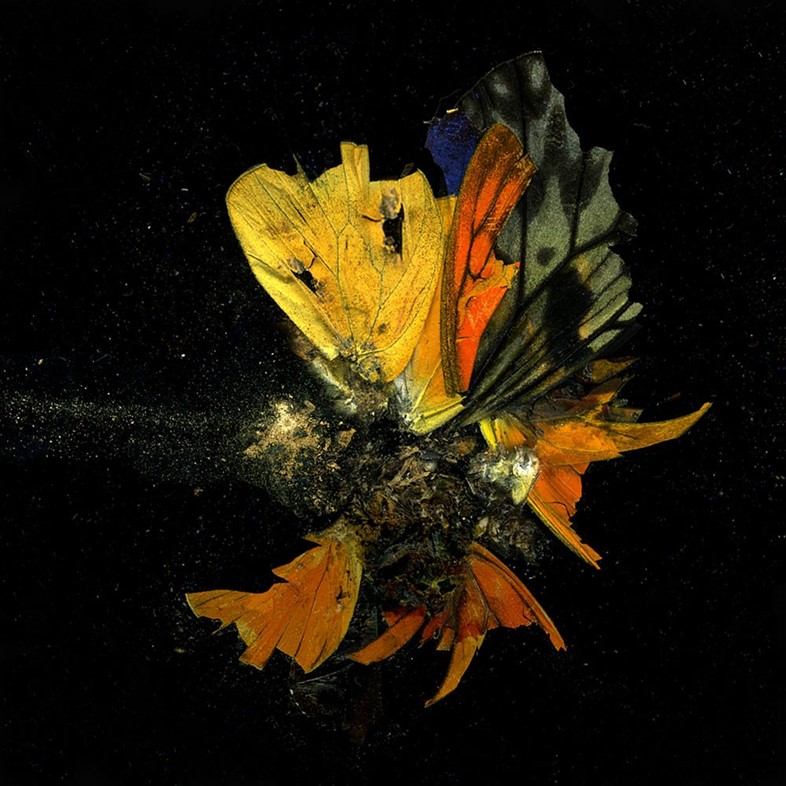
Insecticide, 2009
"These moths and butterflies were squashed onto small sheets of glass and scanned with a regular desktop scanner, and after 100 scans a potentially interesting figure would emerge. This figure would then be played with on Photoshop for several weeks until its full character emerged; at a certain point the image reached a stage where it was totally independent of me, and existed as its own creature. I then printed the digital file on C-type paper at 180 x 180cm.
"The final pictures resemble memento mori photography, keepsakes made to preserve images of the dead. They are literally representations of the thee-dimensional world extinguished onto a two-dimensional plane. Although the insects are very small and insignificant in scale, scanned at high resolution and printed on a large scale they become infinitely detailed, sometimes resembling clusters of star constellations or distant galaxies."
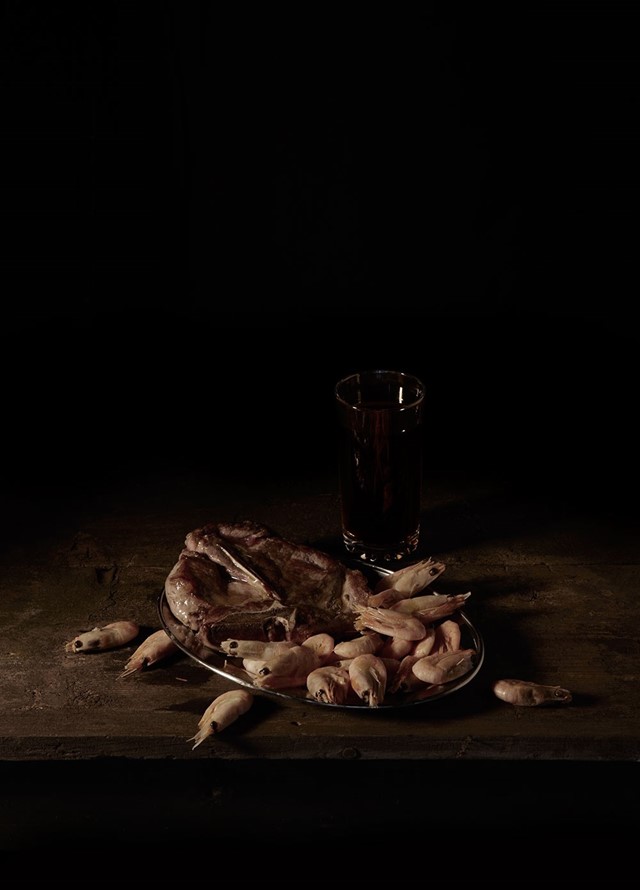
Last Meal on Death Row, Texas, 2012
"I researched hundreds of last meals chosen by prisoners on death row prior to execution, and then I restaged several of these meals in the manner of Dutch 17th century still life paintings. Many prisoners chose food that was either specific to their ethnicity or food that they would have enjoyed during childhood. The poignant choices they made, in this chillingly 'civilised' process, corresponded to the Vanitas tradition, a genre that reflects on man's futile accumulation of worldly goods and the transience of life. The photographs were framed in black heavily moulded frames typical of Dutch still life painting, so that they became surrogate portraits of the prisoners."
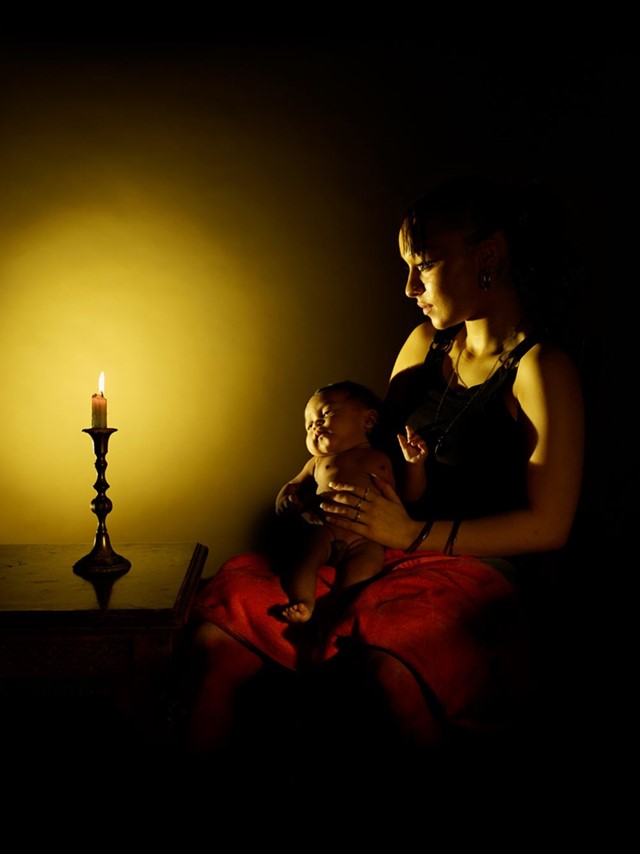
Single Nights, Annabelle, 2007
"These photographs were made while I had a studio in Bethnal Green – I would regularly see very young girls, often single mothers, out walking with their brood. I styled them on paintings by George De La Tour, images that often depict intimate scenes of men or women contemplating life in a darkened room. The works reference traditional Mother and Child paintings, but also intimate a sense of quiet desperation or ennui."
Mat Collishaw is at The New Art Gallery Walsall and In Camera is at Library of Birmingham, both until January 10 2016.
